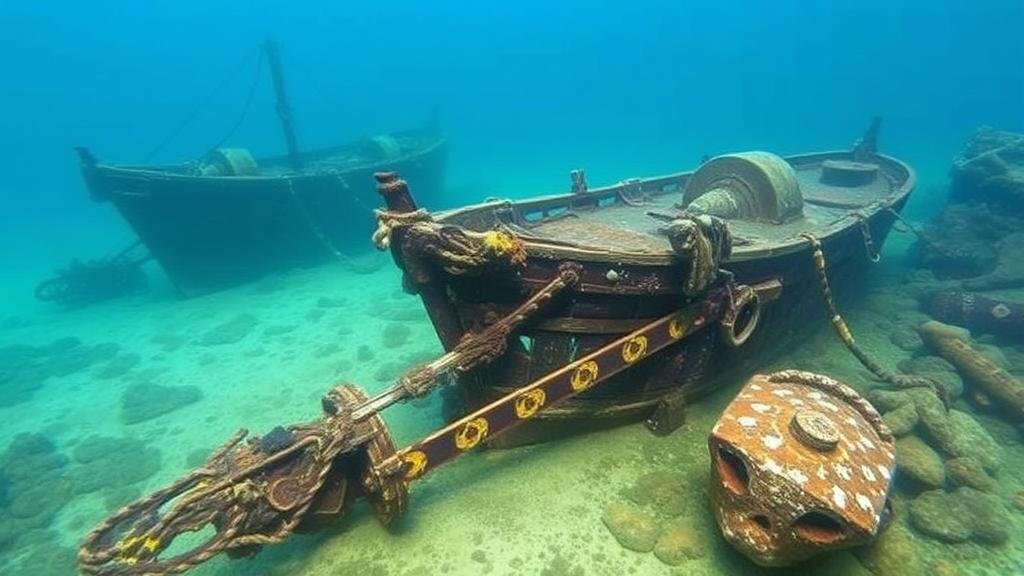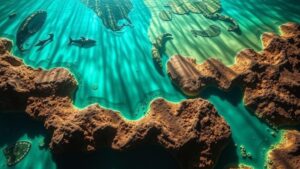Unlocking the Shipwreck Stories in the Global Marine Archaeology Database
Unlocking the Shipwreck Stories in the Global Marine Archaeology Database
Marine archaeology, a discipline dedicated to studying submerged relics and landscapes, offers a unique lens through which to examine human history. The Global Marine Archaeology Database (GMAD) serves as a vital repository for the documentation and analysis of shipwrecks around the world. This article explores how unlocking the stories contained within this database can enrich our understanding of maritime history, trade routes, and cultural exchanges.
The Importance of Shipwrecks in Maritime Archaeology
Shipwrecks are invaluable for several reasons. serve as time capsules, preserving artifacts that illustrate the technological advancements, trade networks, and daily lives of people from different eras. For example, the wreck of the Titanic, which sank in 1912, has offered extensive insights into early 20th-century maritime engineering and social hierarchies.
Statistical data indicates that over 3 million shipwrecks lie unexamined beneath the worlds oceans. Each shipwreck adds a piece to the complex jigsaw of human maritime activity, and the potential discoveries are vast. GMAD plays a crucial role in cataloging these wrecks, fostering a comprehensive understanding of our shared maritime heritage.
Overview of the Global Marine Archaeology Database
The GMAD is an online platform developed to facilitate access to marine archaeological data, including shipwreck locations, historical contexts, and artifact descriptions. Established in 2018, the database has gathered contributions from numerous institutions globally.
- Over 1,200 shipwrecks are currently documented in the database.
- Collaboration from institutions in Europe, North America, and Australia enhances the databases scope.
The data within GMAD is meticulously categorized, allowing researchers to filter by factors such as location, type of vessel, and period. This capability is crucial for identifying patterns in maritime activity and trade routes across different time frames.
Case Studies: Shipwrecks as Historical Narratives
Exploring specific case studies reveals the significance of shipwrecks in understanding historical narratives. wreck of the Spanish galleon Atocha, which sank in 1622 near the Florida Keys, illustrates the wealth of treasures and the risks associated with transatlantic trade. The retrieval efforts led by Mel Fisher in the 1980s uncovered more than $400 million worth of gold and silver, redefining perspectives on Spanish colonial wealth.
Another remarkable example is the HMHS Britannic, which sank in 1916. A sister ship to the Titanic, its wreck has provided insights into early 20th-century naval architecture and the wartime context of its sinking. ongoing research around Britannic’s remains underscores how shipwrecks can inform our understanding of both peacetime and wartime navigation.
Challenges in Marine Archaeology
While the GMAD presents immense potential, several challenges impede the full unlocking of shipwreck stories:
- Technological Limitations: Deep-sea exploration remains resource-intensive, hampered by costly submersibles and skilled personnel.
- Legal and Ethical Issues: Salvaging wreck sites can lead to conflicts over ownership and preservation, raising ethical questions regarding the treatment of cultural heritage.
- Environmental Threats: Climate change poses significant risks to submerged sites, including ocean acidification and rising sea levels that threaten structural integrity.
The Future of Marine Archaeology
To effectively unlock the stories of shipwrecks, a multi-faceted approach is required. Integrating new technologies such as remote sensing and underwater drones can expedite the survey process. Plus, enhancing international collaboration can result in more comprehensive data sharing and preservation initiatives.
As marine archaeology continues to evolve, the GMAD must adapt to changing technological and environmental landscapes. By fostering interdisciplinary partnerships, researchers can maximize the potential of the database, making significant strides in unraveling shipwreck narratives that contribute to our understanding of maritime history.
Conclusion
The Global Marine Archaeology Database serves as a critical tool in unlocking shipwreck stories that enrich our historical knowledge. Through careful research and collaboration, the lessons learned from the past will not only preserve cultural heritage but also inform our maritime future. As global interest in maritime archaeology continues to grow, leveraging the information housed within the GMAD becomes imperative to uncover the multifaceted narratives that lie beneath our oceans.
In the quest to explore and understand our worlds maritime history, the database stands as a beacon of opportunity, waiting to reveal the vast stories hidden within the depths of the seas.


